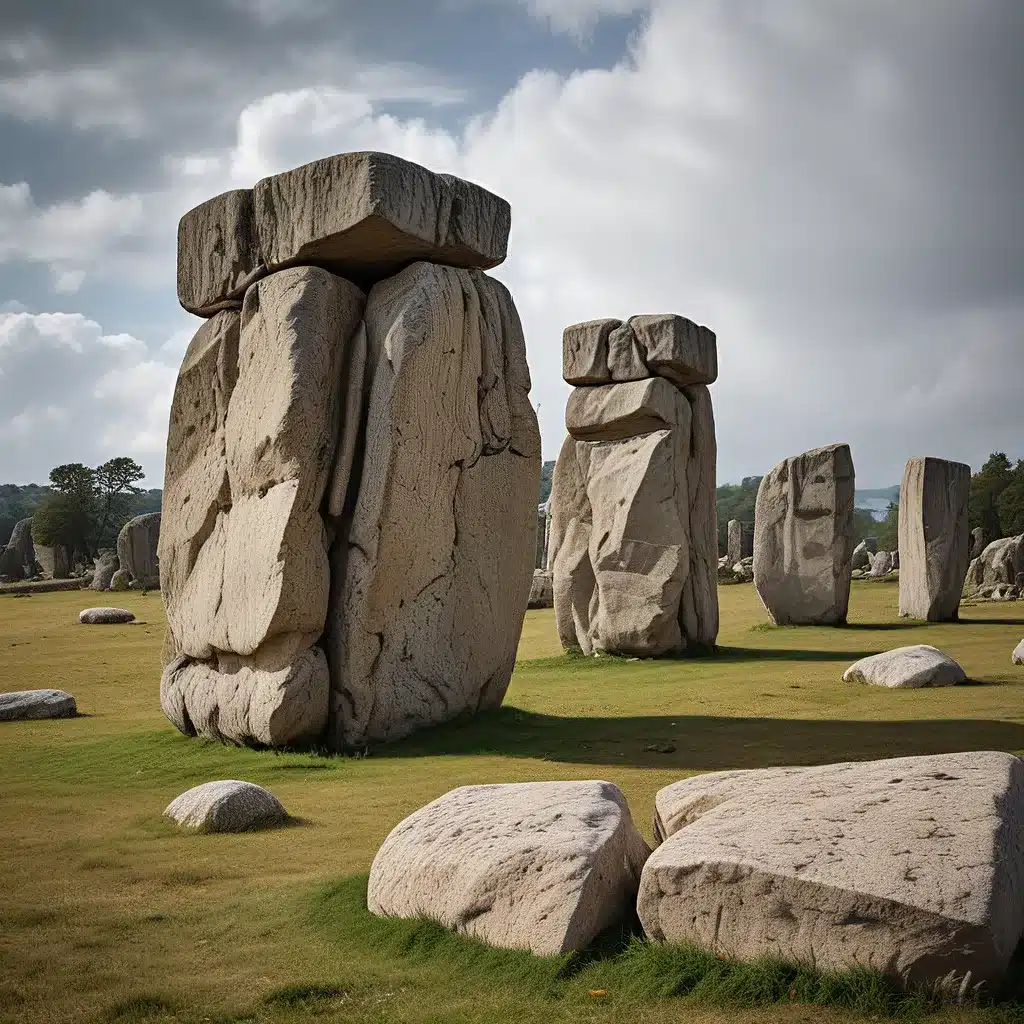
In the annals of human history, few archaeological discoveries have captured the imagination of scholars and the public alike as profoundly as the megalithic structures scattered across the globe. These colossal monuments, built with astonishing precision and technical mastery, stand as silent testaments to the ingenuity and perseverance of our ancient ancestors. From the iconic Stonehenge in England to the mysterious Göbekli Tepe in Turkey, these architectural marvels continue to challenge our understanding of early human civilization and the remarkable feats of prehistoric engineering.
Unraveling the Mysteries of Megalithic Cultures
The term “megalith” derives from the Greek words “megas,” meaning “great,” and “lithos,” meaning “stone.” These massive stone structures, often weighing several tons, were meticulously crafted and carefully positioned, showcasing a level of sophistication and coordination that has left modern scholars in awe. Across the world, from the Pyramids of Giza in Egypt to the Moai of Easter Island, these monumental constructions serve as physical reminders of the technological and organizational prowess of the societies that created them.
One of the most captivating aspects of these megalithic sites is the ongoing debate surrounding their purpose and the methods employed in their construction. While some structures were undoubtedly used for religious or ceremonial purposes, others may have served as astronomical observatories, centers of trade, or even as fortifications. The sheer scale and precision of these ancient structures have led researchers to question how they were built without the aid of modern machinery or advanced engineering techniques.
Unlocking the Secrets of Göbekli Tepe
Among the most remarkable megalithic sites is the Göbekli Tepe in southeastern Turkey, which has been hailed as one of the most significant archaeological discoveries of the 21st century. Predating Stonehenge by over 6,000 years, Göbekli Tepe is believed to be the world’s oldest known temple, dating back to the Neolithic period, around 12,000 years ago.
The site consists of a series of T-shaped stone pillars, some reaching up to 20 feet in height and weighing several tons, arranged in a series of circular and rectangular enclosures. These monumental structures are adorned with intricate carvings of animals, including wild boars, foxes, and birds, as well as abstract symbols, suggesting a highly sophisticated and organized society capable of large-scale construction projects.
Archaeological Paths has described Göbekli Tepe as “the most significant archaeological find of our era,” as it challenges the traditional narrative of the development of human civilization. Prior to the discovery of this site, it was widely believed that the construction of large-scale monuments and the emergence of organized religion were the result of the rise of agricultural societies. However, Göbekli Tepe predates the advent of agriculture, suggesting that the development of complex social structures and the ability to undertake monumental construction projects may have been a driving force behind the eventual shift to a more sedentary, agricultural lifestyle.
The Enduring Allure of Megalithic Cultures
The fascination with megalithic structures extends far beyond the academic realm, capturing the imagination of the general public as well. These colossal monuments have long been the subject of speculation, myth, and conspiracy theories, with some suggesting that they were built by extraterrestrial beings or lost civilizations with advanced technology.
Despite the lack of definitive answers, the enduring appeal of these ancient structures lies in their sheer scale, technical sophistication, and the mysteries that surround their creation. Exploring these sites offers a unique window into the past, allowing us to glimpse the ingenuity, social organization, and cultural beliefs of the societies that built them.
Uncovering New Insights: Recent Discoveries and Emerging Theories
As archaeological research continues to uncover more about these enigmatic structures, new insights and theories emerge, challenging our understanding of human development and the evolution of early civilizations. For example, the recent discovery of the Nabta Playa site in Egypt, which predates Stonehenge by over 1,000 years, has led researchers to re-evaluate the timeline of the development of sophisticated astronomical knowledge and the ability to construct large-scale monuments.
Similarly, the ongoing excavations at Göbekli Tepe have yielded further revelations about the site’s purpose and the level of organization and technical prowess of its builders. The discovery of intricate carvings, advanced stone-working techniques, and evidence of large-scale coordinated efforts have sparked renewed interest in the cultural and social dynamics of these early societies.
Exploring the Cultural Legacy of Megalithic Civilizations
Beyond the purely archaeological significance of these remarkable structures, the cultural legacy of the megalithic civilizations continues to captivate and inspire people around the world. Many of these ancient sites are now UNESCO World Heritage Sites, recognized for their outstanding universal value and their importance in understanding the development of human civilization.
The Lost Kingdoms website, for example, offers engaging and informative content that delves into the rich cultural heritage of these ancient societies, showcasing their artistic achievements, architectural innovations, and their enduring influence on modern cultures.
By exploring the Megaliths, we not only uncover the technical marvels of prehistoric engineering but also gain insights into the complex social, cultural, and spiritual beliefs of our ancestors. These monumental structures serve as a profound testament to the human spirit, our capacity for collaboration, and our enduring drive to understand the mysteries of the past.


